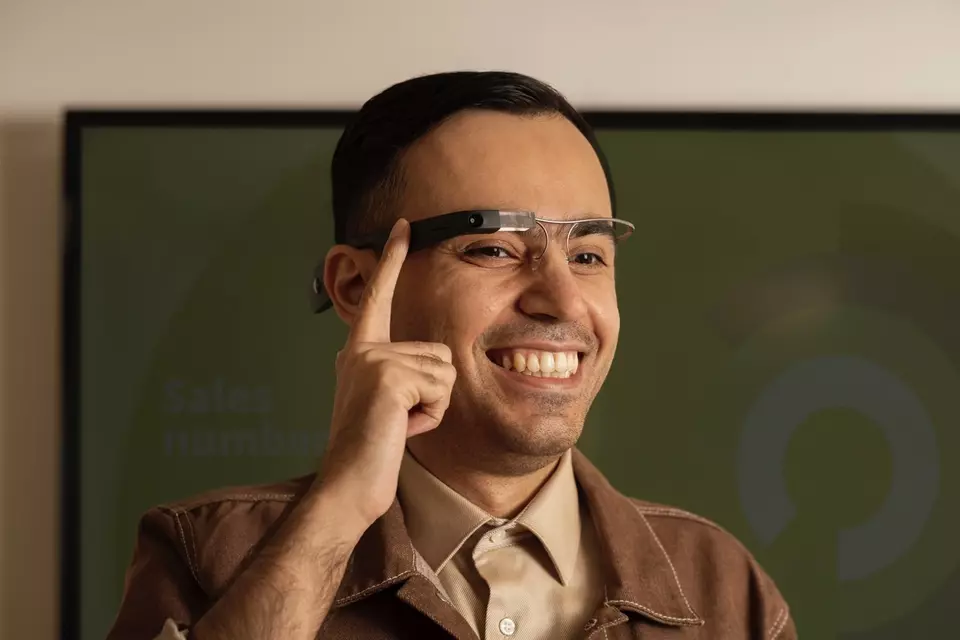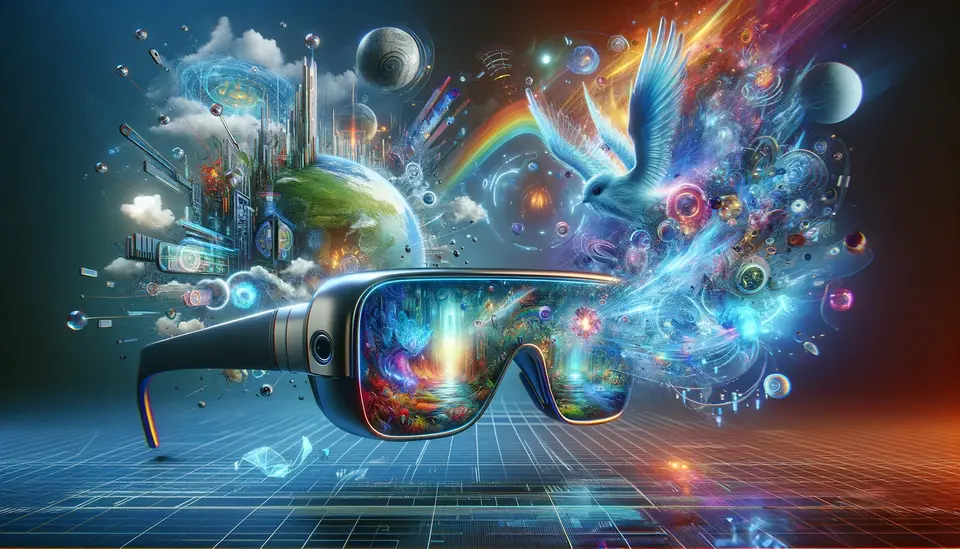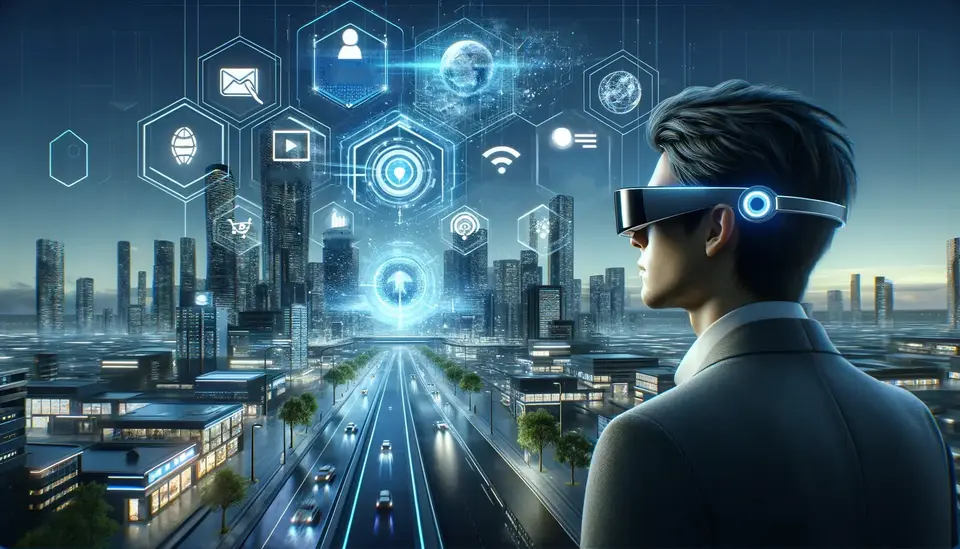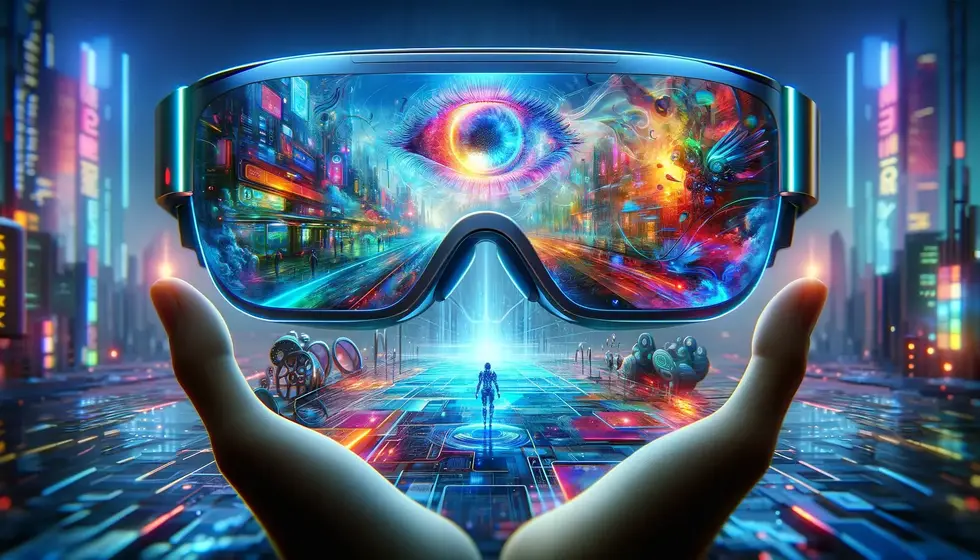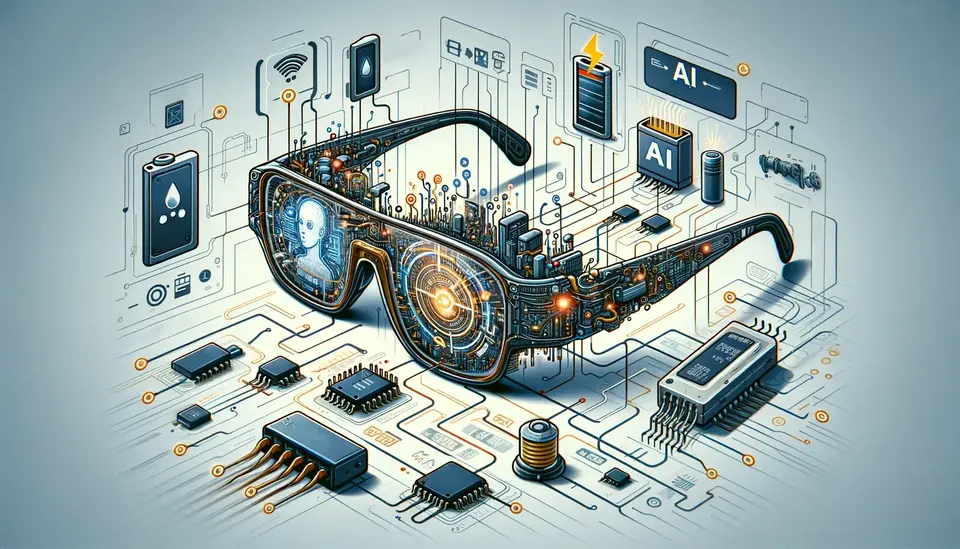The Comprehensive History of Smart Glasses
Posted on August 18, 2023 19 minutes 3934 words
Table of contents
- 1. Introduction
- 2. Early Concepts and Prototypes
- 3. Google Glass: The Pioneer
- 4. Growth and Diversification
- 5. The Fusion of Fashion and Tech
- 6. Augmented Reality (AR) and Smart Glasses
- 7. Challenges and Controversies
- 9. Conclusion
1. Introduction
What are Smart Glasses?
Smart glasses, often dubbed as “wearable computers”, bridge the gap between the physical and the digital world. At their core, these are eyewear embedded with a combination of sensors, cameras, microprocessors, and a display, enabling the wearer to view and interact with digital information superimposed onto their natural field of vision. Unlike traditional glasses, which solely focus on correcting vision or shielding eyes from the sun, smart glasses are an amalgamation of cutting-edge technology and traditional eyewear, offering functionalities that extend far beyond mere vision correction.
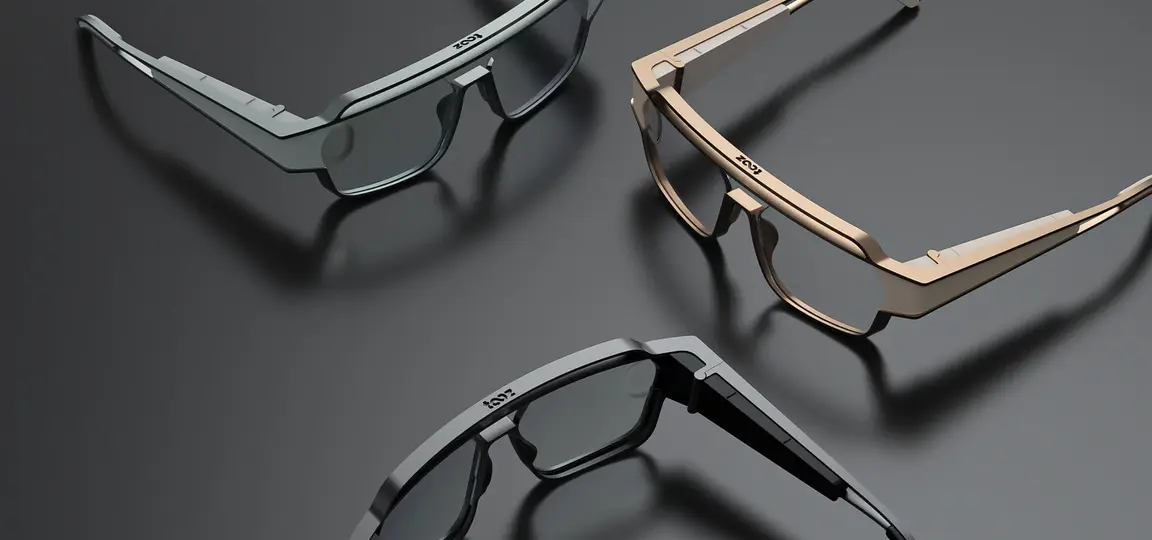
A Revolution in Personal Computing
Smart glasses represent a seismic shift in the way we perceive and engage with personal computing. The evolution of computing has progressed from large mainframe computers to desktops, then shifted to laptops, further miniaturized into smartphones and tablets. Now, with smart glasses, the progression is moving from something we hold in our hands to something we wear on our faces. This transition marks a significant step towards a more integrated, immersive, and personal computing experience.
Redefining Human-Technology Interaction
The allure of smart glasses lies in their potential to change our interaction with technology and, by extension, our surroundings. They herald the promise of:
-
Augmented Reality (AR): Smart glasses can overlay digital data, graphics, or animations onto the real world, enhancing our perception and understanding of our environment. For instance, while touring a historical site, Augmented Reality (AR) can offer real-time information, stories, and visuals related to specific landmarks.
-
Hands-Free Operation: This allows professionals, like technicians or surgeons, to access vital information or instructions without diverting their attention from the task at hand.
-
Social Integration: Imagine recognizing people via facial recognition, accessing their public profiles, or even virtual social cues, all in real-time during an interaction.
-
Enhanced Accessibility: For the differently-abled, these glasses could be revolutionary, offering features like real-time text-to-speech for the visually impaired or sign language interpretation for the hearing impaired.
The history and evolution of smart glasses underscore humanity’s perennial quest to push the boundaries of innovation. As we delve deeper into their journey, from the first prototypes to their current incarnations, we recognize not just a timeline of technological advancements but a testament to our enduring vision of a world where our physical and digital realities seamlessly merge.
2. Early Concepts and Prototypes
Sci-Fi and Pop Culture: Foreseeing the Future
Long before the advent of real-world smart glasses, the worlds of science fiction and pop culture were already painting vivid pictures of advanced eyewear and augmented realities. These imaginative realms often serve as bellwethers for technological evolution, hinting at possibilities that engineers and scientists would later strive to actualize.
-
Film and Television: Classics such as “Star Trek: The Next Generation” showcased VISOR, a wearable device that helps the blind see. “Back to the Future Part II” gave audiences a glimpse of Marty McFly’s children wearing glasses that doubled up as phones and TVs. More recently, movies like “Minority Report” and “Iron Man” featured advanced AR interfaces, setting the tone for futuristic human-computer interactions.
-
Literature: Science fiction novels and short stories have been instrumental in presenting the idea of AR and advanced eyewear. William Gibson’s “Neuromancer” introduced the idea of a digital visual overlay on the real world, essentially predicting the concept of AR.
-
Comics and Graphic Novels: Many superhero and cyberpunk-themed comics portrayed characters using advanced eyewear to communicate, gather information, or enhance their abilities.
These depictions served a dual purpose: they entertained while also familiarizing audiences with the concepts of AR and wearable tech, making the eventual real-world introductions less alien and more of a long-awaited realization.
First Steps into Reality: Experimental Prototypes and Designs
As the 20th century progressed, the line between fiction and reality began to blur. Visionaries in the tech industry took inspiration from pop culture and embarked on creating the first tangible versions of smart glasses.
-
Sword of Damocles (1968): Often considered one of the earliest Virtual Reality (VR) systems, the “Sword of Damocles” was a head-mounted display created by Ivan Sutherland and his student Bob Sproull. Though it was not a pair of glasses per se, its importance lies in its pioneering approach to immersive 3D graphics.
-
Private Eye (1989): Reflection Technology’s “Private Eye” displayed monochrome text and graphics on a tiny screen. While it didn’t offer AR capabilities, it was a significant step toward wearable displays.
-
KARMA (1990s): Developed at Columbia University, the Knowledge-based Augmented Reality for Maintenance Assistance (KARMA) was one of the early attempts at AR. It was designed to guide users in maintenance tasks by overlaying simple digital graphics onto the real-world environment.
-
Various AR Goggles (Early 2000s): With the advent of improved computer graphics and miniaturization of electronics, several companies and academic institutions began prototyping AR goggles. These were often bulky, with limited functionality but paved the way for more refined designs in the future.
The early stages of smart glasses’ evolution were characterized by a dance between fiction’s imaginations and the budding realities of technology. While pop culture offered glimpses of a future filled with advanced eyewear and augmented worlds, real-world pioneers tirelessly worked behind the scenes, laying the foundation for what was to come. Their prototypes, while rudimentary by today’s standards, marked the beginning of a technological revolution that would continue to evolve and reshape our experiences in the decades to follow.
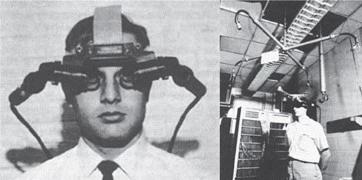
3. Google Glass: The Pioneer
Introduction to Google Glass and Its Features
The Dawn of a New Era
In 2012, Google announced a project that would aim to bring the promise of science fiction to reality: Google Glass. This ambitious project was one of the first commercial attempts to create wearable technology that would integrate digital data directly into a user’s field of vision.
Features that Stood Out
-
Display: Google Glass provided a miniature screen above the user’s right eye, allowing them to see digital information while maintaining their view of the real world.
-
Voice Commands: The device responded to voice commands, letting users take photos, send messages, or even get directions with simple spoken prompts.
-
Camera Integration: With a built-in camera, users could record videos or take photos hands-free.
-
Connectivity: Google Glass was capable of connecting to Wi-Fi and Bluetooth, and it paired seamlessly with smartphones.
-
Applications: A range of applications, including navigation, email, news updates, and more, were made available, enhancing the functionality of the device.
Public and Media Reaction
When Google unveiled Glass, the initial reaction was a blend of astonishment, skepticism, and anticipation. Many were captivated by the concept, viewing it as a significant leap toward a future where augmented reality becomes a daily aspect of life.
-
Media Buzz: Media outlets and tech blogs were abuzz with discussions, reviews, and speculations. Glass was featured prominently at tech conventions, and early adopters proudly showcased their experiences on social media.
-
Privacy Concerns: However, not all reactions were positive. Many raised concerns about privacy, given that the device could record video or take photos discreetly. This led to the coining of the term “Glassholes” for users who misused the tech inappropriately, especially in private spaces.
-
Mixed Reviews: While some praised its innovative approach, others found it to be clunky, unrefined, or simply not ready for mainstream use.
Challenges, Controversies, and the Consumer Version’s End
Facing Real-world Hurdles
Despite its pioneering status, Google Glass faced multiple challenges during its journey:
-
Battery Life: One of the primary concerns was its limited battery life, making it less practical for extended use.
-
Price Point: Retailing at $1,500 for the Explorer Edition, it was deemed prohibitively expensive for many consumers.
-
Limited Use Cases: While it had potential, many struggled to find daily, practical applications for the device, making it more of a novelty.
The Enterprise Shift and Recent Developments
In the face of these challenges, Google pivoted. They discontinued the consumer version and focused on Glass Enterprise Edition, targeting specific industries like healthcare, manufacturing, and logistics, where hands-free information access was invaluable.
However, as indicated in the recent announcements from Google:
-
End of Sales: As of March 15, 2023, Google stopped selling the Glass Enterprise Edition.
-
Limited Support: While the devices will continue to work post-September 15, 2023, Google has made it clear that there will be no further software updates. The pre-installed “Meet on Glass” app will also lose official support, potentially becoming non-functional after the mentioned date.
-
Hardware Replacements: For those with existing devices, Google has committed to replacements under their current process until September 15, 2023.
-
Third-party Reliance: With no software updates planned from Google, third-party developers are now responsible for maintaining and developing apps for the device.
Google Glass, in many ways, was a monumental stride in wearable technology. It served as a beacon for what could be achieved and also laid bare the challenges that lay ahead. While it may not have achieved mainstream success as initially envisioned, its legacy as a pioneering force in the realm of smart glasses and augmented reality remains indelible. With the recent announcements, it’s evident that while this chapter might be closing, the story of smart glasses, spurred on by Google’s early foray, is far from over.
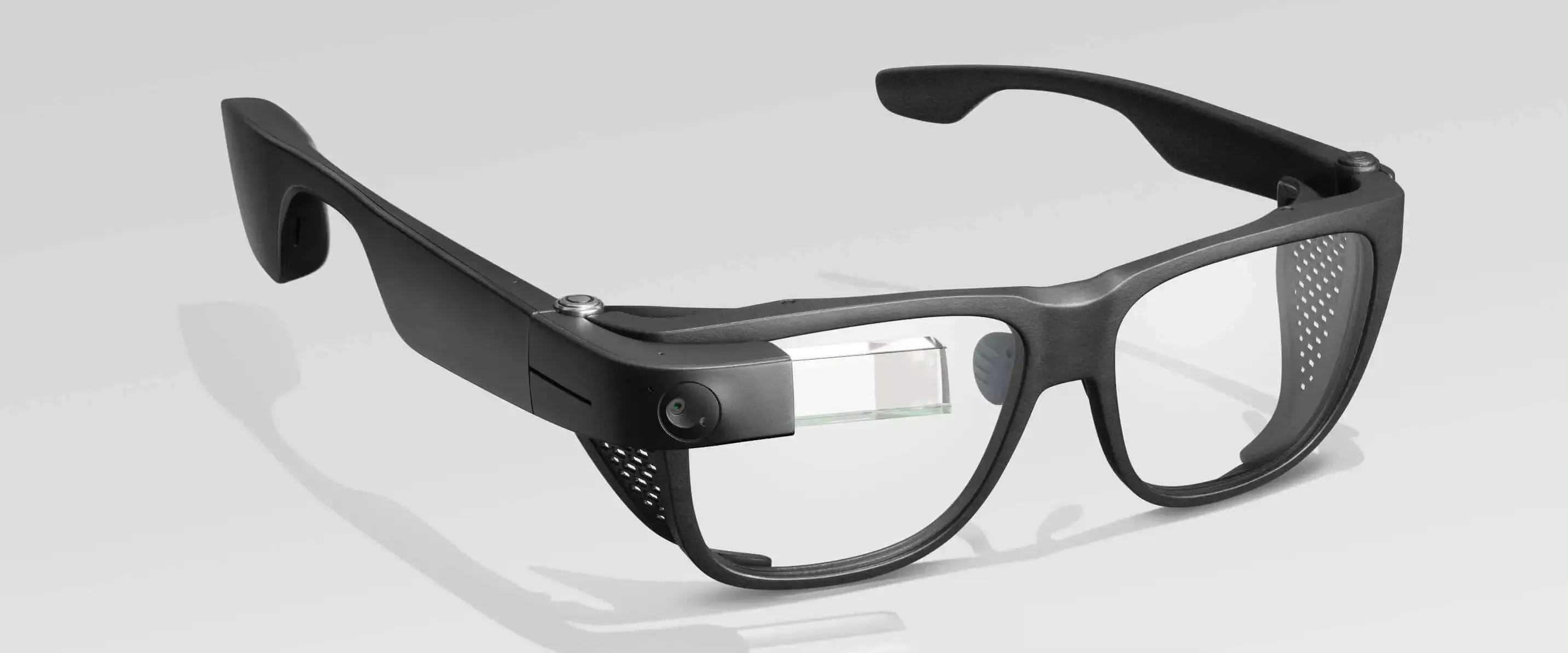
4. Growth and Diversification
The Expanding Horizon
With Google Glass making the initial foray into the smart glasses arena, the stage was set for other tech behemoths and startups alike to delve into this burgeoning domain. The period post-Google Glass saw an exponential growth, marked by enhanced designs, diversified features, and more targeted audience outreach.
Tech Titans Join the Fray
Microsoft’s HoloLens
-
Introduction: Launched in 2016, HoloLens represented Microsoft’s leap into the mixed reality (MR) space. Unlike traditional AR which simply overlays digital content, MR integrates these projections into the real world in a more interactive manner.
-
Features: Boasting spatial recognition, HoloLens could map the user’s surroundings and anchor holograms to specific points in real space. This allowed for applications from gaming to professional workspaces where virtual 3D models could be manipulated and examined in detail.
-
Target Audience: With its high price tag and advanced features, HoloLens was primarily geared towards professionals, industries, and developers rather than everyday consumers.

Snap’s Spectacles
-
Introduction: Snap Inc., the company behind Snapchat, unveiled Spectacles in 2016. These were smart glasses with a simpler function compared to the more ambitious projects like HoloLens.
-
Features: Equipped with a camera, Spectacles allowed users to record short videos (Snaps) from a first-person perspective and then seamlessly upload them to Snapchat.
-
Evolution: Over the years, Snap introduced multiple versions of Spectacles, refining the design and adding augmented reality features to later versions.

Facebook (Meta) and Their Vision
-
Project Aria: In its early days of exploring AR, Facebook announced Project Aria in 2020, a research tool to help the company understand AR glasses’ potential uses and challenges.
-
Collaborations: Facebook, now rebranded as Meta, also collaborated with Ray-Ban to launch stylish smart glasses. These glasses allowed users to take photos, record videos, and even listen to music.
-
Future Aspirations: With Meta’s broader vision of building a comprehensive metaverse, it’s evident that AR and MR will play pivotal roles in their future endeavors.

Designs, Features, and Audiences: An Ever-evolving Landscape
Design Evolution: Early smart glasses, including Google Glass, were often criticized for their overtly “techy” look. However, as more players entered the arena, there was a clear shift towards designs that mirrored traditional eyewear, making them more appealing to everyday users.
Feature Expansion: Initial smart glasses mainly focused on basic functions like notifications and photo capturing. Over time, features expanded to include advanced AR integrations, MR capabilities, fitness tracking, and even real-time language translation.
Audience Diversification: While early devices targeted tech enthusiasts, the audience base quickly broadened. From gamers and content creators to professionals in healthcare, architecture, and design, the applications and relevance of smart glasses permeated various domains.
The era post-Google Glass witnessed a frenzy of activity in the smart glasses space. The journey, marked by trials, errors, and breakthroughs, showcased the tech world’s unyielding spirit to refine and reimagine the smart glasses concept. As diverse players, from tech giants to niche startups, threw their hats in the ring, the smart glasses narrative evolved from a mere tech novelty to an integral tool with vast and varied applications. The trajectory of this evolution underscores not just the rapid pace of tech advancements, but also the ceaseless human endeavor to converge reality and imagination.
5. The Fusion of Fashion and Tech
Setting the Stage
As the concept of smart glasses transitioned from experimental prototypes to consumer-grade products, one critique frequently surfaced: the aesthetics. Many early designs prioritized functionality, often at the expense of style. But as the lines between technology and daily life continued to blur, it became evident that for smart glasses to gain mainstream acceptance, they needed not only to be smart but also to be fashionable. This heralded the era where tech giants and fashion moguls joined forces to redefine wearable tech.
Trendsetting Partnerships
Luxottica and Google
-
Pairing Up: Recognizing the need for a style overhaul, Google, post the initial launch of Glass, collaborated with Luxottica, the group behind iconic brands like Ray-Ban and Oakley.
-
The Outcome: This partnership aimed to infuse traditional eyewear design with Google’s tech, producing frames that looked less robotic and more everyday-chic.
Snap’s Spectacles and Their Style Evolution
-
Initial Launch: Snap’s first Spectacles had a fun and youthful design, in line with their brand ethos and primary audience. But as they aimed for broader appeal, design changes followed.
-
Fashion Collaboration: Future iterations saw Snap working closely with design teams to refine and create trendier versions, aligning more with mainstream fashion sensibilities.
Meta’s Smart Move with Ray-Ban
-
Stylish Integration: In a significant fusion of tech and style, Meta (formerly Facebook) teamed up with Ray-Ban, producing glasses that retained the iconic Ray-Ban design while embedding tech features subtly.
-
Consumer Reception: With the credibility of a renowned eyewear brand, these glasses appealed not only to tech enthusiasts but also to those who prioritized style.
Traditional Eyewear Companies: Joining the Tech Wave
Several traditional eyewear companies, having witnessed the growing intersection of fashion and tech, began to explore the smart glasses domain:
-
EssilorLuxottica: Beyond its collaboration with Google, the eyewear giant explored its own ventures into the smart eyewear space, seeking ways to seamlessly blend technology with classic eyewear designs.
-
Warby Parker: Known for revolutionizing eyewear e-commerce, Warby Parker showed interest in tech-augmented eyewear, considering how it might fuse its design-centric approach with new tech functionalities.
Designers: The Unsung Heroes
Behind the successful fusion of tech and fashion lay the designers, the unsung heroes who faced the unique challenge of accommodating electronics, ensuring comfort, and maintaining style:
-
Material Innovation: Designers explored new materials and fabrication techniques to house tech components without compromising on design.
-
User Experience: Beyond aesthetics, designers also had to ensure that smart glasses remained ergonomic, comfortable, and intuitive to use.
-
Fashion Shows: Some smart eyewear even graced fashion runways, further cementing their status as a fashion accessory, not just a tech gadget.
The integration of fashion and tech in the smart glasses arena was a testament to the evolving consumer mindset. It wasn’t enough for a product to be functional; it also had to seamlessly integrate into one’s lifestyle and identity. This era showcased the power of collaboration, as tech giants and fashion leaders came together to redefine what wearable technology could look like, setting the stage for a future where technology is not just worn but also flaunted.
6. Augmented Reality (AR) and Smart Glasses
Introduction: A New Reality Awaits
At the nexus of smart glasses’ evolution lies the transformative technology of Augmented Reality (AR). By superimposing digital data onto the real world, AR has paved the way for a myriad of applications, fundamentally reshaping how we interact with our environment. Smart glasses, serving as the perfect vehicle for AR, have extended the realm of possibilities, blurring the boundaries between the tangible and the digital.
The Symbiotic Relationship
AR’s Dependence on Smart Glasses
-
Intimate Display: Unlike smartphones or tablets, smart glasses offer a more immersive and personal display experience. AR, to be truly effective, requires such an intimate interaction model.
-
Hands-Free Operation: Smart glasses allow users to interact with AR content without the need for holding a device, offering a more natural and seamless experience.
-
Real-Time Feedback: With built-in cameras and sensors, smart glasses can analyze the environment in real-time, enhancing the accuracy and relevance of AR overlays.
Real-World Applications of AR through Smart Glasses
Navigation
-
Overlaid Directions: Imagine walking in a city and seeing AR arrows on the ground, guiding you to your destination, or information bubbles popping up when you gaze at landmarks. Companies like Google have begun testing such concepts, aiming to revolutionize pedestrian navigation.
-
Vehicle Integration: Some companies are exploring the potential of integrating AR smart glasses with vehicles, offering drivers real-time data about traffic, directions, and points of interest.
Medical Uses
-
Surgery Assistance: Surgeons are using AR glasses to overlay critical data during procedures, such as real-time MRI scans, making surgeries more precise.
-
Patient Interaction: For patients with conditions like autism, AR glasses can provide cues or augment social interactions, enhancing their ability to communicate and understand social contexts.
Gaming
-
Immersive Environments: Games like Pokémon Go gave us a teaser of AR gaming on smartphones. Transpose that experience to smart glasses, and gamers can fully immerse themselves in the environment, turning the real world into a playground.
-
Interactive Scenarios: More complex games could involve real-world interactions, like treasure hunts where players search for digital treasures in the physical world.
Professional Training
-
Skill Augmentation: For professions like mechanics or technicians, AR can overlay instructions on real objects, guiding them through complex tasks.
-
Safety Training: Industries like mining or construction can use AR glasses to simulate emergencies, training workers in a safe, controlled environment.
The Future is Augmented
AR, propelled by the capabilities of smart glasses, is more than just a tech trend. It’s a paradigm shift, reshaping industries, professions, and daily routines. From helping a tourist navigate a foreign city to assisting a surgeon in a life-saving procedure, AR has the potential to touch every facet of human life. As smart glasses continue to evolve, their symbiosis with AR promises a future where our reality is enriched, augmented, and more connected than ever before.
7. Challenges and Controversies
Introduction: The Flip Side of Progress
With any groundbreaking technological advancement, while there are undeniable benefits, there also come challenges. Smart glasses, despite their transformative potential, have not been immune to controversies and difficulties. To get a holistic understanding, it’s crucial to examine the hurdles faced in the journey of bringing this wearable tech to the masses.
Privacy Concerns
Intrusive Potential
-
Unconsented Filming: One of the primary concerns with smart glasses, especially those with integrated cameras, is the potential for users to record or snap pictures without the knowledge or consent of those around them.
-
Data Collection and Storage: As with many connected devices, there’s the looming question of what data these glasses collect, how they store it, and who can access it.
Public Spaces and Policies
-
Bans and Restrictions: Due to privacy worries, numerous establishments, like bars, cinemas, and gyms, have banned the use of smart glasses within their premises.
-
Legal Implications: The legal landscape is still evolving, with lawmakers deliberating on how to balance the benefits of smart glasses with privacy rights. Regulations concerning where and when smart glasses can be used are in discussion in many jurisdictions.
Safety Issues
Distractions and Cognitive Overload
-
Information Overload: Continuous notifications or AR overlays can divert a user’s attention, potentially leading to cognitive overload and reduced awareness of their surroundings.
-
Potential for Accidents: For users engaged in tasks like driving or operating machinery, distractions from smart glasses can have dangerous, if not fatal, consequences.
Physical Strain
-
Eye Fatigue: Prolonged use of smart glasses can lead to eye strain, as users adjust between focusing on the digital content close to their eyes and the real-world environment.
-
Spatial Disorientation: Some users might experience disorientation, especially with immersive AR applications that significantly alter or overlay the real-world view.
Technological Hurdles
Power Consumption and Battery Life
-
Demanding Tech: Packing powerful processors, displays, cameras, and other sensors into a compact frame demands a lot from batteries, often leading to limited usage times.
-
Balancing Act: Manufacturers face the challenge of increasing battery life without adding too much weight or compromising the design.
Display Quality and Field of View
-
Limited Field of View: Early AR smart glasses often suffered from a limited field of view, making the AR experience less immersive.
-
Resolution and Brightness: Achieving high-resolution displays that remain visible in various lighting conditions, especially bright sunlight, remains a challenge.
Connectivity and Processing Power
-
Dependence on Other Devices: Many smart glasses rely on tethered connections to smartphones or other devices for processing power, which can limit their standalone capabilities.
-
Lag and Responsiveness: For real-time AR applications, even a slight lag can disrupt the user experience, demanding significant processing power packed into a small form factor.
Navigating the Roadblocks
The journey of smart glasses, like many technological innovations, is filled with both promise and pitfalls. Addressing these challenges requires a delicate balance of technological advancements, thoughtful design, user education, and evolving regulations. As the industry progresses, the hope remains that solutions will emerge, making smart glasses not just a technological marvel but an integral part of our daily lives.
9. Conclusion
A Look Back: Charting the Path of Progress
From their rudimentary beginnings as mere concepts in the imaginations of science fiction writers to their tangible presence on the faces of technophiles across the globe, smart glasses have embarked on a journey full of highs, lows, innovations, and learnings. It’s a tale not just of technological evolution, but of human aspiration — our innate desire to break boundaries and enhance our lived experience.
The Transformative Impact of Smart Glasses
More Than Just a Gadget
-
Merging Worlds: Smart glasses stand at the intersection of our physical reality and the boundless expanse of the digital realm. They’re not just devices; they’re bridges, connecting and enhancing two fundamental facets of our modern existence.
-
Redefining Interactions: Gone are the days when our digital interactions were confined to screens held in our hands or placed on our desks. With smart glasses, the world itself becomes a canvas, bringing information, entertainment, and tools directly into our line of sight.
The Untapped Potential: A Glimpse into the Future
Continuous Evolution
-
Technological Advancements: As with all tech, smart glasses will continue to evolve. Expect lighter designs, longer battery lives, enhanced displays, and more robust standalone capabilities.
-
Diverse Applications: As developers continue to innovate, we can anticipate a plethora of new applications, ranging from enhanced gaming experiences to groundbreaking professional tools.
Shaping Societal Norms
-
Ethical Considerations: As smart glasses become more mainstream, societies will grapple with evolving ethical considerations, especially around privacy and safety. This ongoing dialogue will shape how we integrate this technology into our daily lives.
-
A Cultural Shift: Just as smartphones shifted how we communicate and consume content, smart glasses might usher in a new cultural shift, redefining norms, aesthetics, and values.
In Conclusion: Embracing the Augmented Era
The odyssey of smart glasses encapsulates humanity’s relentless pursuit of innovation. While challenges remain, their potential to revolutionize our interaction with the digital sphere is undeniable. As we stand at this juncture, it’s exhilarating to ponder the possibilities that lie ahead. In embracing smart glasses, we’re not just adopting a new piece of tech; we’re stepping into a future where our digital and physical realities intertwine seamlessly, heralding a new era of augmented experience.

